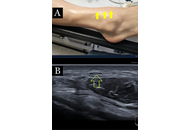
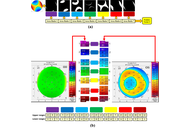
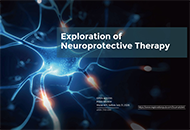

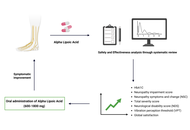
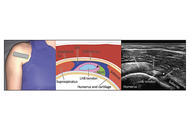
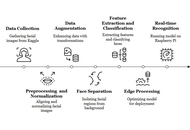
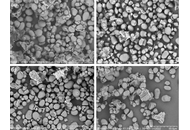
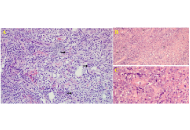
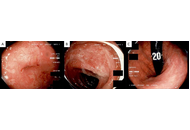
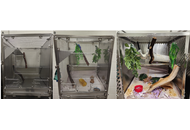
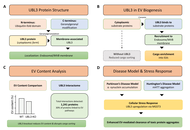
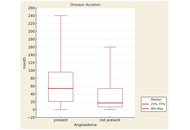
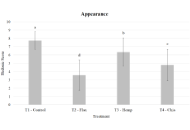
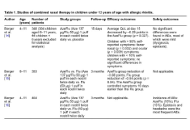
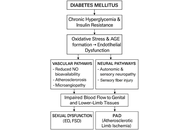
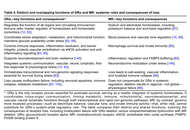
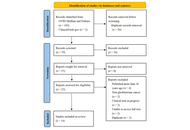
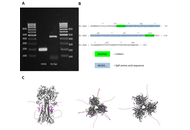


Scleroderma, also known as systemic sclerosis, is a rare connective tissue disorder with an unclear and poorly understood pathogenesis. While it primarily affects the skin and internal organs through mechanisms involving vascular dysfunction, immune dysregulation, and fibrosis, its effects on the peripheral nervous system may also be substantial. We report the case of a 36-year-old male with a known history of scleroderma who presented with chronic, diffuse burning pain throughout the body. His symptoms included daily asthenia, dizziness, nausea, headaches, and limb pain exacerbated by cold, compression, or stretching. Diagnostic ultrasound confirmed multiple peripheral nerve entrapments, which were treated with ultrasound-guided 5% dextrose hydrodissection. This intervention provided significant relief of pain, paresthesia, and motor symptoms, which improved his quality of life. This case highlights the potential of dextrose hydrodissection as a safe, minimally invasive, and cost-effective symptomatic treatment for peripheral neuropathies in patients with scleroderma. Further studies are warranted to establish its broader therapeutic role in treating scleroderma-related neuropathies.
Scleroderma, also known as systemic sclerosis, is a rare connective tissue disorder with an unclear and poorly understood pathogenesis. While it primarily affects the skin and internal organs through mechanisms involving vascular dysfunction, immune dysregulation, and fibrosis, its effects on the peripheral nervous system may also be substantial. We report the case of a 36-year-old male with a known history of scleroderma who presented with chronic, diffuse burning pain throughout the body. His symptoms included daily asthenia, dizziness, nausea, headaches, and limb pain exacerbated by cold, compression, or stretching. Diagnostic ultrasound confirmed multiple peripheral nerve entrapments, which were treated with ultrasound-guided 5% dextrose hydrodissection. This intervention provided significant relief of pain, paresthesia, and motor symptoms, which improved his quality of life. This case highlights the potential of dextrose hydrodissection as a safe, minimally invasive, and cost-effective symptomatic treatment for peripheral neuropathies in patients with scleroderma. Further studies are warranted to establish its broader therapeutic role in treating scleroderma-related neuropathies.
DOI: https://doi.org/10.37349/emd.2025.1007111

Aim:
Patients diagnosed with irregular astigmatism often require specific methods of vision correction. Among these, the use of a rigid gas permeable (RGP) lens is considered one of the most effective treatment approaches. This study aims to propose a new automated method for accurate RGP lens base-curve detection.
Methods:
A multi-modal feature fusion approach was developed based on Pentacam images, incorporating image processing and machine learning techniques. Four types of features were extracted from the images and integrated through a serial feature fusion mechanism. The fused features were then evaluated using a multi-layered perceptron (MLP) network. Specifically, the features included: (1) middle-layer outputs of a convolutional autoencoder (CAE) applied to RGB map combinations; (2) ratios of colored areas in the front cornea map; (3) a feature vector from cornea front parameters; and (4) the radius of the reference sphere/ellipse in the front elevation map.
Results:
Evaluations were performed on a manually labeled dataset. The proposed method achieved a mean squared error (MSE) of 0.005 and a coefficient of determination of 0.79, demonstrating improved accuracy compared to existing techniques.
Conclusions:
The proposed multi-modal feature fusion technique provides a reliable and accurate solution for RGP lens base-curve detection. This approach reduces manual intervention in lens fitting and represents a significant step toward automated base-curve determination.
Aim:
Patients diagnosed with irregular astigmatism often require specific methods of vision correction. Among these, the use of a rigid gas permeable (RGP) lens is considered one of the most effective treatment approaches. This study aims to propose a new automated method for accurate RGP lens base-curve detection.
Methods:
A multi-modal feature fusion approach was developed based on Pentacam images, incorporating image processing and machine learning techniques. Four types of features were extracted from the images and integrated through a serial feature fusion mechanism. The fused features were then evaluated using a multi-layered perceptron (MLP) network. Specifically, the features included: (1) middle-layer outputs of a convolutional autoencoder (CAE) applied to RGB map combinations; (2) ratios of colored areas in the front cornea map; (3) a feature vector from cornea front parameters; and (4) the radius of the reference sphere/ellipse in the front elevation map.
Results:
Evaluations were performed on a manually labeled dataset. The proposed method achieved a mean squared error (MSE) of 0.005 and a coefficient of determination of 0.79, demonstrating improved accuracy compared to existing techniques.
Conclusions:
The proposed multi-modal feature fusion technique provides a reliable and accurate solution for RGP lens base-curve detection. This approach reduces manual intervention in lens fitting and represents a significant step toward automated base-curve determination.
DOI: https://doi.org/10.37349/edht.2025.101175
This article belongs to the special issue Deep Learning Methods and Applications for Biomedical Imaging

Non-traumatic arterial dissection exhibits a propensity for the Asian population and predominantly affects the posterior circulation. Regrettably, during the initial fortnight prior to diagnosis, approximately one in thirty cervicocephalic artery dissections (CAD) are misdiagnosed. Overlooked CAD, more prevalent in the younger demographic, can result in severe complications such as ischemic stroke, subarachnoid hemorrhage, and possibly death. Comprehensive investigations are necessary to prevent overlooking such a diagnosis. Digital subtraction angiography (DSA) is universally acknowledged as the most efficacious technique for assessing luminal morphology and hemodynamics, but may miss the vessel wall characteristics, an important component for diagnosing dissection. Magnetic resonance angiography (MRA), conversely, is less invasive and can assess vessel wall properties. A high-resolution MRA with vascular wall imaging can efficiently identify conditions such as intimal flaps, double-lumen signs, intramural hematomas, mural thrombi, and pseudoaneurysms, aiding in the evaluation of suspected CAD. MRA with vascular wall imaging and DSA complement each other in the identification and characterization of cerebral artery dissections, both contributing to treatment. In cases of undefined stroke etiology, particularly among the young demographic, utilizing both tests (when one yields no significant findings) may assist in detecting overlooked instances of CAD. The prompt identification and treatment of CAD are essential, particularly for surgical intervention and to avert recurrence in predisposed patients. Identifying the etiology of a stroke or transient ischemic attack is important for providing precise therapy and preventing recurrence.
Non-traumatic arterial dissection exhibits a propensity for the Asian population and predominantly affects the posterior circulation. Regrettably, during the initial fortnight prior to diagnosis, approximately one in thirty cervicocephalic artery dissections (CAD) are misdiagnosed. Overlooked CAD, more prevalent in the younger demographic, can result in severe complications such as ischemic stroke, subarachnoid hemorrhage, and possibly death. Comprehensive investigations are necessary to prevent overlooking such a diagnosis. Digital subtraction angiography (DSA) is universally acknowledged as the most efficacious technique for assessing luminal morphology and hemodynamics, but may miss the vessel wall characteristics, an important component for diagnosing dissection. Magnetic resonance angiography (MRA), conversely, is less invasive and can assess vessel wall properties. A high-resolution MRA with vascular wall imaging can efficiently identify conditions such as intimal flaps, double-lumen signs, intramural hematomas, mural thrombi, and pseudoaneurysms, aiding in the evaluation of suspected CAD. MRA with vascular wall imaging and DSA complement each other in the identification and characterization of cerebral artery dissections, both contributing to treatment. In cases of undefined stroke etiology, particularly among the young demographic, utilizing both tests (when one yields no significant findings) may assist in detecting overlooked instances of CAD. The prompt identification and treatment of CAD are essential, particularly for surgical intervention and to avert recurrence in predisposed patients. Identifying the etiology of a stroke or transient ischemic attack is important for providing precise therapy and preventing recurrence.
DOI: https://doi.org/10.37349/ent.2025.1004126

Pediatric cirrhosis differs significantly from adult liver disease in terms of etiology, progression, and management. The unique physiological, nutritional, and developmental needs of children require specialized diagnostic and therapeutic strategies. This review underscores the distinct challenges in diagnosing and managing pediatric cirrhosis, focusing on its complications, management, and outcomes. Unlike adults, where cirrhosis often results from viral hepatitis or alcohol use, pediatric cases are predominantly cholestatic, with biliary atresia being the most common cause. Complications mainly involve portal hypertension and impaired liver function, leading to malnutrition and neurodevelopmental delay. Nutritional management is complex and requires increased caloric and protein intake, supplementation with fat-soluble vitamins, and the use of medium-chain triglycerides. Although hepatocellular carcinoma is rare in children, it remains a severe complication with a higher incidence in certain genetic and metabolic disorders. Surveillance is challenging due to diagnostic limitations and the lack of standardized pediatric screening protocols. Treatment is further complicated by constraints related to size and developmental stage, particularly in the management of portal hypertension. Pediatric cirrhosis requires an individualized multidisciplinary approach to address the interplay between growth, nutrition, and liver function. Early diagnosis, nutritional optimization, malignancy surveillance, and timely referral for liver transplantation are crucial. Ongoing research on pediatric-specific therapies and outcomes is essential for improving prognosis and quality of life.
Pediatric cirrhosis differs significantly from adult liver disease in terms of etiology, progression, and management. The unique physiological, nutritional, and developmental needs of children require specialized diagnostic and therapeutic strategies. This review underscores the distinct challenges in diagnosing and managing pediatric cirrhosis, focusing on its complications, management, and outcomes. Unlike adults, where cirrhosis often results from viral hepatitis or alcohol use, pediatric cases are predominantly cholestatic, with biliary atresia being the most common cause. Complications mainly involve portal hypertension and impaired liver function, leading to malnutrition and neurodevelopmental delay. Nutritional management is complex and requires increased caloric and protein intake, supplementation with fat-soluble vitamins, and the use of medium-chain triglycerides. Although hepatocellular carcinoma is rare in children, it remains a severe complication with a higher incidence in certain genetic and metabolic disorders. Surveillance is challenging due to diagnostic limitations and the lack of standardized pediatric screening protocols. Treatment is further complicated by constraints related to size and developmental stage, particularly in the management of portal hypertension. Pediatric cirrhosis requires an individualized multidisciplinary approach to address the interplay between growth, nutrition, and liver function. Early diagnosis, nutritional optimization, malignancy surveillance, and timely referral for liver transplantation are crucial. Ongoing research on pediatric-specific therapies and outcomes is essential for improving prognosis and quality of life.
DOI: https://doi.org/10.37349/edd.2025.1005104
This article belongs to the special issue Cirrhosis and Its Complications

Background:
This study aims to assess oral alpha lipoic acid’s (ALA’s) safety and effectiveness in managing diabetic neuropathy.
Methods:
A thorough search of the literature was conducted using PubMed, Google Scholar, and Embase databases, and the study was performed as per Preferred Reporting Items for Systematic Reviews and Meta-Analyses (PRISMA) guidelines.
Results:
Based on inclusion and exclusion criteria, nine randomized controlled trials (RCTs) comprising 1,345 subjects were selected. The results showed that ALA has shown significant reduction in glycated hemoglobin (HbA1C) [inverse variance (IV): –0.66, (–0.81 → –0.51) at 95% CI, p < 0.00001, I2 = 92%], neuropathy impairment score (NIS) [IV: –1.19, (–2.28 → –0.09) at 95% CI, p = 0.03, I2 = 58%], along with improving the neuropathy symptoms and change (NSC) number [IV: –0.18, (–0.35 → –0.01) at 95% CI, p = 0.04, I2 = 0%], NSC severity score [IV: –0.65, (–0.83 → –0.48) at 95% CI, p < 0.00001, I2 = 89%], total severity score (TSS) [IV: –0.43, (–0.59 → –0.27) at 95% CI, p < 0.00001, I2 = 98%], neurological disability score (NDS) [IV: –0.72, (–1.03 → –0.40) at 95% CI, p < 0.00001, I2 = 98%], vibration perception threshold (VPT) [IV: –0.35, (–0.50 → –0.19) at 95% CI, p < 0.0001, I2 = 96%] and global satisfaction [Mantel-Haenszel (M-H) odds ratio (OR): 3.51, (1.06 → 11.61) at 95% CI, p = 0.04, I2 = 72%] when compared to the control or placebo group. However, ALA has not shown significant changes in motor nerve conduction velocity (MNCV) score [IV: 0.26, (–0.44 → 0.96) at 95% CI, p = 0.47, I2 = 49%] and NIS-low limb (NIS-LL) [IV: –0.58, (–1.35 → 0.19) at 95% CI, p = 0.14, I2 = 0%] when compared to the placebo group.
Discussion:
Based on the available moderate to high-quality evidence, we can conclude that oral administration of ALA at doses of 600–1,800 mg may be beneficial in improving/alleviating the symptoms resulting from diabetic neuropathy.
Background:
This study aims to assess oral alpha lipoic acid’s (ALA’s) safety and effectiveness in managing diabetic neuropathy.
Methods:
A thorough search of the literature was conducted using PubMed, Google Scholar, and Embase databases, and the study was performed as per Preferred Reporting Items for Systematic Reviews and Meta-Analyses (PRISMA) guidelines.
Results:
Based on inclusion and exclusion criteria, nine randomized controlled trials (RCTs) comprising 1,345 subjects were selected. The results showed that ALA has shown significant reduction in glycated hemoglobin (HbA1C) [inverse variance (IV): –0.66, (–0.81 → –0.51) at 95% CI, p < 0.00001, I2 = 92%], neuropathy impairment score (NIS) [IV: –1.19, (–2.28 → –0.09) at 95% CI, p = 0.03, I2 = 58%], along with improving the neuropathy symptoms and change (NSC) number [IV: –0.18, (–0.35 → –0.01) at 95% CI, p = 0.04, I2 = 0%], NSC severity score [IV: –0.65, (–0.83 → –0.48) at 95% CI, p < 0.00001, I2 = 89%], total severity score (TSS) [IV: –0.43, (–0.59 → –0.27) at 95% CI, p < 0.00001, I2 = 98%], neurological disability score (NDS) [IV: –0.72, (–1.03 → –0.40) at 95% CI, p < 0.00001, I2 = 98%], vibration perception threshold (VPT) [IV: –0.35, (–0.50 → –0.19) at 95% CI, p < 0.0001, I2 = 96%] and global satisfaction [Mantel-Haenszel (M-H) odds ratio (OR): 3.51, (1.06 → 11.61) at 95% CI, p = 0.04, I2 = 72%] when compared to the control or placebo group. However, ALA has not shown significant changes in motor nerve conduction velocity (MNCV) score [IV: 0.26, (–0.44 → 0.96) at 95% CI, p = 0.47, I2 = 49%] and NIS-low limb (NIS-LL) [IV: –0.58, (–1.35 → 0.19) at 95% CI, p = 0.14, I2 = 0%] when compared to the placebo group.
Discussion:
Based on the available moderate to high-quality evidence, we can conclude that oral administration of ALA at doses of 600–1,800 mg may be beneficial in improving/alleviating the symptoms resulting from diabetic neuropathy.
DOI: https://doi.org/10.37349/ent.2025.1004125
This article belongs to the special issue Natural Products in Neurotherapeutic Applications

Adhesive capsulitis, or frozen shoulder, is characterized by pain and progressive restriction of both active and passive shoulder range of motion. The pathophysiology involves an initial inflammatory phase with elevated cytokines, followed by pathological fibrosis, capsular thickening, and contracture involving both intra- and extra-articular structures, including the coracohumeral ligament and rotator cuff interval. Diagnosis is primarily clinical. The traditional three-stage model, freezing, frozen, and thawing, has been challenged by recent evidence showing that spontaneous recovery is uncommon and that many patients do not fully regain shoulder function without active treatment. This paradigm change emphasizes the necessity of early and focused interventions to maximize functional recovery. While physiotherapy remains the mainstay of management, interventional procedures have gained prominence for their ability to reduce pain and facilitate rehabilitation. Interventional options include intra-articular corticosteroid injections, hydrodilatation, and suprascapular nerve blocks. This narrative review summarizes current evidence on interventional procedures for adhesive capsulitis, highlighting their mechanisms, techniques, and comparative efficacy.
Adhesive capsulitis, or frozen shoulder, is characterized by pain and progressive restriction of both active and passive shoulder range of motion. The pathophysiology involves an initial inflammatory phase with elevated cytokines, followed by pathological fibrosis, capsular thickening, and contracture involving both intra- and extra-articular structures, including the coracohumeral ligament and rotator cuff interval. Diagnosis is primarily clinical. The traditional three-stage model, freezing, frozen, and thawing, has been challenged by recent evidence showing that spontaneous recovery is uncommon and that many patients do not fully regain shoulder function without active treatment. This paradigm change emphasizes the necessity of early and focused interventions to maximize functional recovery. While physiotherapy remains the mainstay of management, interventional procedures have gained prominence for their ability to reduce pain and facilitate rehabilitation. Interventional options include intra-articular corticosteroid injections, hydrodilatation, and suprascapular nerve blocks. This narrative review summarizes current evidence on interventional procedures for adhesive capsulitis, highlighting their mechanisms, techniques, and comparative efficacy.
DOI: https://doi.org/10.37349/emd.2025.1007110

Aim:
Early screening for autism spectrum disorder (ASD) using facial images is promising but often limited by small datasets and the lack of deployable models for resource-constrained settings. To develop and evaluate a lightweight framework that combines a multi-scale vision transformer (MS-ViT) with edge optimization for ASD classification from children’s facial images.
Methods:
We analyzed 2,940 RGB facial images of children obtained from a publicly available Kaggle dataset. Faces were detected, aligned, and cropped (ROI extraction), then normalized; training used standard augmentations. The backbone was an MS-ViT with multi-scale feature aggregation. We performed an 80/20 stratified split (training/testing) and used five-fold cross-validation within the training set for validation (i.e., ~64% training, ~16% validation, and 20% testing per fold). Edge deployment was enabled through post-training optimization. Performance was assessed using accuracy, sensitivity, specificity, AUC-ROC, and per-image inference time.
Results:
The best configuration (MS-ViT + Edge + Augmented) achieved an accuracy of 96.85%, sensitivity of 96.09%, specificity of 97.92%, and AUC-ROC of 0.9874. On a Raspberry Pi-class device, the model reached ~181 milliseconds per image, supporting real-time screening.
Conclusions:
The proposed “MS-ViT + Edge + Augmented” framework offers near-state-of-the-art accuracy with low latency on low-power hardware, making it a practical candidate for early ASD screening in clinics and schools. Limitations include dataset size and demographic diversity; prospective clinical validation on larger, multi-site cohorts is warranted.
Aim:
Early screening for autism spectrum disorder (ASD) using facial images is promising but often limited by small datasets and the lack of deployable models for resource-constrained settings. To develop and evaluate a lightweight framework that combines a multi-scale vision transformer (MS-ViT) with edge optimization for ASD classification from children’s facial images.
Methods:
We analyzed 2,940 RGB facial images of children obtained from a publicly available Kaggle dataset. Faces were detected, aligned, and cropped (ROI extraction), then normalized; training used standard augmentations. The backbone was an MS-ViT with multi-scale feature aggregation. We performed an 80/20 stratified split (training/testing) and used five-fold cross-validation within the training set for validation (i.e., ~64% training, ~16% validation, and 20% testing per fold). Edge deployment was enabled through post-training optimization. Performance was assessed using accuracy, sensitivity, specificity, AUC-ROC, and per-image inference time.
Results:
The best configuration (MS-ViT + Edge + Augmented) achieved an accuracy of 96.85%, sensitivity of 96.09%, specificity of 97.92%, and AUC-ROC of 0.9874. On a Raspberry Pi-class device, the model reached ~181 milliseconds per image, supporting real-time screening.
Conclusions:
The proposed “MS-ViT + Edge + Augmented” framework offers near-state-of-the-art accuracy with low latency on low-power hardware, making it a practical candidate for early ASD screening in clinics and schools. Limitations include dataset size and demographic diversity; prospective clinical validation on larger, multi-site cohorts is warranted.
DOI: https://doi.org/10.37349/emed.2025.1001376

Aim:
Brosimum alicastrum Sw. (Ramón) seed is an underutilized starch source. Ramón seed starch (RSS) has been partially characterized, showing functional properties superior to corn starch. The modification of native starches is useful for obtaining desirable characteristics. HMT is a physical method that may alter the structure of starch by modifying its interaction with water. The study evaluated the effect of HMT on the chemical composition, morphological characteristics, and functional properties of RSS.
Methods:
RSS, corn, and wheat starches were isolated using a wet milling method. The starches were modified with HMT (10%, 20%, and 30% moisture). Chemical composition of flours and native starches was determined using AOAC methods. Total starch was determined by the AACC method, and amylose content was analyzed using the assay with DMSO, Concanavalin A, and amylolytic hydrolysis. Morphological characteristics were observed using scanning electron microscopy. Functional properties [solubility index (SI), water absorption capacity (WAC), and swelling power (SP)] of starches were determined using gravimetric methods.
Results:
RSS had higher mineral content (0.9%), total carbohydrates (98.5%), dietary fiber (11.2%), and lower protein content (0.2%) and total starch (82.0%) than wheat and corn starches. RSS yield was 31.2% and showed small granules (6.3 ± 1.4–11.5 ± 1.3 µm), with oval-spherical shape, and typical amylose content (24.9 ± 0.4%). No significant changes were observed in amylose-amylopectin content and morphology of granules after modification. The functional properties of RSS were significantly improved in HMT10%, reducing the peak at 80°C and increasing the SI (18.7 ± 0.8%), WAC (18.1 ± 0.2 g water/g starch), and SP (22.2 ± 0.2 g water/g starch) at 90°C, compared to native RSS, and greater than modified wheat and corn starches.
Conclusions:
RSS modified by HMT at 10% moisture gradually enhances its functional properties as temperature increases, and above that of corn and wheat starches, resulting in an attractive non-conventional starch with potential industry applications.
Aim:
Brosimum alicastrum Sw. (Ramón) seed is an underutilized starch source. Ramón seed starch (RSS) has been partially characterized, showing functional properties superior to corn starch. The modification of native starches is useful for obtaining desirable characteristics. HMT is a physical method that may alter the structure of starch by modifying its interaction with water. The study evaluated the effect of HMT on the chemical composition, morphological characteristics, and functional properties of RSS.
Methods:
RSS, corn, and wheat starches were isolated using a wet milling method. The starches were modified with HMT (10%, 20%, and 30% moisture). Chemical composition of flours and native starches was determined using AOAC methods. Total starch was determined by the AACC method, and amylose content was analyzed using the assay with DMSO, Concanavalin A, and amylolytic hydrolysis. Morphological characteristics were observed using scanning electron microscopy. Functional properties [solubility index (SI), water absorption capacity (WAC), and swelling power (SP)] of starches were determined using gravimetric methods.
Results:
RSS had higher mineral content (0.9%), total carbohydrates (98.5%), dietary fiber (11.2%), and lower protein content (0.2%) and total starch (82.0%) than wheat and corn starches. RSS yield was 31.2% and showed small granules (6.3 ± 1.4–11.5 ± 1.3 µm), with oval-spherical shape, and typical amylose content (24.9 ± 0.4%). No significant changes were observed in amylose-amylopectin content and morphology of granules after modification. The functional properties of RSS were significantly improved in HMT10%, reducing the peak at 80°C and increasing the SI (18.7 ± 0.8%), WAC (18.1 ± 0.2 g water/g starch), and SP (22.2 ± 0.2 g water/g starch) at 90°C, compared to native RSS, and greater than modified wheat and corn starches.
Conclusions:
RSS modified by HMT at 10% moisture gradually enhances its functional properties as temperature increases, and above that of corn and wheat starches, resulting in an attractive non-conventional starch with potential industry applications.
DOI: https://doi.org/10.37349/eff.2025.1010102
This article belongs to the special issue Organic and Inorganic Compounds in Foods and Plants from Latin America

Primary central nervous system lymphoma is a rare form of extranodal non-Hodgkin lymphoma that is confined to the brain, spinal cord, leptomeninges, or eyes, representing less than one percent of all non-Hodgkin lymphomas and approximately four percent of primary brain tumors. When the disease is truly isolated to the central nervous system, with no evidence of systemic spread, it poses unique diagnostic and therapeutic challenges, particularly in immunocompetent patients. We reviewed nine recently published cases from 2021 to 2024 that described isolated primary central nervous system lymphoma without extracranial involvement. Patients ranged in age from forty-four to eighty-five years, with both immunocompetent and immunosuppressed individuals represented. Presenting symptoms include focal neurological deficits, seizures, progressive confusion, cranial neuropathies, and neurolymphomatosis. Magnetic resonance imaging findings were diverse, including intra-axial masses, leptomeningeal and cranial nerve enhancement, and mass effect. Cerebrospinal fluid analysis was variably positive for lymphoma cells. Histopathological analysis confirmed diffuse large B-cell lymphoma in all cases, although initial biopsies were sometimes inconclusive, underscoring the importance of repeat tissue sampling and expert pathology review. Treatment strategies most often included high-dose methotrexate-based chemotherapy, monoclonal antibody therapy, and radiotherapy, with some patients undergoing surgical decompression or diagnostic craniotomy. Follow-up data revealed variable survival outcomes, with a subset of patients achieving disease-free survival beyond one year. These cases highlight the wide clinical spectrum and diagnostic complexity of isolated primary central nervous system lymphoma and reinforce the need for a high index of suspicion, timely advanced imaging, multidisciplinary discussion, and appropriate tissue diagnosis to guide individualized management.
Primary central nervous system lymphoma is a rare form of extranodal non-Hodgkin lymphoma that is confined to the brain, spinal cord, leptomeninges, or eyes, representing less than one percent of all non-Hodgkin lymphomas and approximately four percent of primary brain tumors. When the disease is truly isolated to the central nervous system, with no evidence of systemic spread, it poses unique diagnostic and therapeutic challenges, particularly in immunocompetent patients. We reviewed nine recently published cases from 2021 to 2024 that described isolated primary central nervous system lymphoma without extracranial involvement. Patients ranged in age from forty-four to eighty-five years, with both immunocompetent and immunosuppressed individuals represented. Presenting symptoms include focal neurological deficits, seizures, progressive confusion, cranial neuropathies, and neurolymphomatosis. Magnetic resonance imaging findings were diverse, including intra-axial masses, leptomeningeal and cranial nerve enhancement, and mass effect. Cerebrospinal fluid analysis was variably positive for lymphoma cells. Histopathological analysis confirmed diffuse large B-cell lymphoma in all cases, although initial biopsies were sometimes inconclusive, underscoring the importance of repeat tissue sampling and expert pathology review. Treatment strategies most often included high-dose methotrexate-based chemotherapy, monoclonal antibody therapy, and radiotherapy, with some patients undergoing surgical decompression or diagnostic craniotomy. Follow-up data revealed variable survival outcomes, with a subset of patients achieving disease-free survival beyond one year. These cases highlight the wide clinical spectrum and diagnostic complexity of isolated primary central nervous system lymphoma and reinforce the need for a high index of suspicion, timely advanced imaging, multidisciplinary discussion, and appropriate tissue diagnosis to guide individualized management.
DOI: https://doi.org/10.37349/en.2025.1006117

Interleukin-17 inhibitors (IL-17i) are used for dermatologic and rheumatologic immune-mediated inflammatory diseases (IMIDs), yet paradoxical inflammatory bowel disease (IBD) can occur. Although trials report low incidence, recognition and management remain difficult outside tertiary care centers. A 54-year-old woman treated with ixekizumab (IXE) for presumptive psoriatic arthritis (PsA) without definitive confirmation developed anorexia, weight loss, abdominal pain, rectal urgency, and hematochezia 16 weeks after IXE initiation. Limited access to gastroenterology contributed to the delayed workup. Catastrophic complications, including bowel perforation, postoperative abscesses, and severe malnutrition, resulted from the cumulative effects of longstanding, inadequately treated disease; excessive immunosuppression with high-dose corticosteroids and infliximab; and concurrent use of opioids and antidiarrheals, among other factors. On transfer to a center skilled in IBD, care included withdrawal of excessive immunosuppression, targeted antimicrobials, and nutrition rehabilitation. Histopathology of the surgical specimen was most consistent with features of Crohn’s disease (CD). After recovery, she achieved clinical, endoscopic, and histologic remission. On rheumatologic reassessment at an independent practice, she did not meet classification criteria for PsA. With continued specialty follow-up, the patient has remained in sustained clinical, laboratory, and endoscopic remission for 16 months, underscoring that timely recognition and disciplined, evidence-based care grounded in the principles used for severe IBD and drug-induced colitis can deliver favorable long-term outcomes. This case highlights the need for structured, accessible clinical guidance, not only to support non-IBD specialists in managing IL-17i-associated complications but also to guide clinicians during the pre-therapy phase in selecting appropriate candidates for treatment and assessing potential gastrointestinal risks before initiating therapy. We present an evidence-informed framework for resource-limited settings that addresses screening, early recognition, diagnostic workup, and therapeutic decision-making to guide safer IL-17i use and improve outcomes.
Interleukin-17 inhibitors (IL-17i) are used for dermatologic and rheumatologic immune-mediated inflammatory diseases (IMIDs), yet paradoxical inflammatory bowel disease (IBD) can occur. Although trials report low incidence, recognition and management remain difficult outside tertiary care centers. A 54-year-old woman treated with ixekizumab (IXE) for presumptive psoriatic arthritis (PsA) without definitive confirmation developed anorexia, weight loss, abdominal pain, rectal urgency, and hematochezia 16 weeks after IXE initiation. Limited access to gastroenterology contributed to the delayed workup. Catastrophic complications, including bowel perforation, postoperative abscesses, and severe malnutrition, resulted from the cumulative effects of longstanding, inadequately treated disease; excessive immunosuppression with high-dose corticosteroids and infliximab; and concurrent use of opioids and antidiarrheals, among other factors. On transfer to a center skilled in IBD, care included withdrawal of excessive immunosuppression, targeted antimicrobials, and nutrition rehabilitation. Histopathology of the surgical specimen was most consistent with features of Crohn’s disease (CD). After recovery, she achieved clinical, endoscopic, and histologic remission. On rheumatologic reassessment at an independent practice, she did not meet classification criteria for PsA. With continued specialty follow-up, the patient has remained in sustained clinical, laboratory, and endoscopic remission for 16 months, underscoring that timely recognition and disciplined, evidence-based care grounded in the principles used for severe IBD and drug-induced colitis can deliver favorable long-term outcomes. This case highlights the need for structured, accessible clinical guidance, not only to support non-IBD specialists in managing IL-17i-associated complications but also to guide clinicians during the pre-therapy phase in selecting appropriate candidates for treatment and assessing potential gastrointestinal risks before initiating therapy. We present an evidence-informed framework for resource-limited settings that addresses screening, early recognition, diagnostic workup, and therapeutic decision-making to guide safer IL-17i use and improve outcomes.
DOI: https://doi.org/10.37349/edd.2025.1005103

Radiation exposure to the eye during cancer treatment can lead to ocular radiation injury (ORI), a devastating condition that can have a profound and permanent impact on vision-related quality of life. Rodent models do not have adequate ocular anatomy to accurately simulate human ORI, and modeling in non-human primates is limited by logistical and ethical concerns. To improve future translational research investigating ways to treat or prevent ORI, we developed protocols for a tree shrew model of ORI. Northern tree shrews (Tupaia belangeri) were obtained by our laboratory. Custom housing and handling methods were developed, including custom body suits to maintain the tree shrew’s body temperature during procedures. Radiation delivery was optimized to accurately deliver radiation, and imaging was performed to observe fundus changes from ORI. Optimization of tree shrew handling, housing, anesthesia approaches, radiation delivery, and clinically-relevant ocular imaging permitted successful induction and assessment of ORI in tree shrews. With these protocols, tree shrews can be used as a highly relevant model organism with key anatomic features similar to humans to study ORI.
Radiation exposure to the eye during cancer treatment can lead to ocular radiation injury (ORI), a devastating condition that can have a profound and permanent impact on vision-related quality of life. Rodent models do not have adequate ocular anatomy to accurately simulate human ORI, and modeling in non-human primates is limited by logistical and ethical concerns. To improve future translational research investigating ways to treat or prevent ORI, we developed protocols for a tree shrew model of ORI. Northern tree shrews (Tupaia belangeri) were obtained by our laboratory. Custom housing and handling methods were developed, including custom body suits to maintain the tree shrew’s body temperature during procedures. Radiation delivery was optimized to accurately deliver radiation, and imaging was performed to observe fundus changes from ORI. Optimization of tree shrew handling, housing, anesthesia approaches, radiation delivery, and clinically-relevant ocular imaging permitted successful induction and assessment of ORI in tree shrews. With these protocols, tree shrews can be used as a highly relevant model organism with key anatomic features similar to humans to study ORI.
DOI: https://doi.org/10.37349/etat.2025.1002352

Neurological disorders constitute a major global health burden with limited effective treatments. Despite advances in molecular neuroscience, critical gaps persist in understanding intercellular communication systems underlying central nervous system homeostasis and neurodegeneration. Extracellular vesicles (EVs), nanoscale to microscale membrane-bound vesicles secreted by virtually all cell types, have emerged as pivotal mediators of intercellular communication in neurological pathologies. This review examines molecular mechanisms governing EV biogenesis, cargo selection, and pathological functions in neurological disorders, emphasizing the emerging role of ubiquitin-like protein 3 (UBL3) as a novel regulator of EV-mediated protein sorting. Neural cell populations produce specialized EV subtypes containing distinct molecular cargo reflecting their physiological states. UBL3, a membrane-anchored post-translational modifier, operates through geranylgeranylation-dependent mechanisms to promote selective protein incorporation into small EVs (sEVs), with knockout studies demonstrating approximately 60% reduction in EV protein content. Proteomic analyses reveal UBL3 interacts with over 1,200 proteins, with ~30% classified as EV cargo proteins. Critically, UBL3-mediated sorting influences disease-associated protein trafficking, including α-synuclein in Parkinson’s disease and mutant huntingtin in Huntington’s disease, suggesting involvement in prion-like spreading mechanisms. EVs’ dual nature as pathological mediators and therapeutic vehicles represents a paradigm shift in neurological medicine. EVs offer advantages as natural drug delivery systems capable of crossing the blood-brain barrier, accessible biomarkers for noninvasive disease monitoring via liquid biopsies (achieving diagnostic accuracies exceeding 0.88 ROC-AUC), and engineered therapeutic platforms for delivering CRISPR-Cas9 systems and neuroprotective factors. However, clinical translation requires addressing challenges, including standardizing isolation protocols, elucidating cell-type-specific cargo sorting mechanisms, and defining optimal administration routes. Understanding UBL3-mediated cargo sorting mechanisms presents promising therapeutic opportunities by selectively modulating pathogenic protein trafficking. EVs, positioned at the intersection of pathogenesis and therapy, represent attractive targets for precision medicine approaches in neurological conditions, with UBL3 emerging as a novel molecular handle for manipulating EV composition and function.
Neurological disorders constitute a major global health burden with limited effective treatments. Despite advances in molecular neuroscience, critical gaps persist in understanding intercellular communication systems underlying central nervous system homeostasis and neurodegeneration. Extracellular vesicles (EVs), nanoscale to microscale membrane-bound vesicles secreted by virtually all cell types, have emerged as pivotal mediators of intercellular communication in neurological pathologies. This review examines molecular mechanisms governing EV biogenesis, cargo selection, and pathological functions in neurological disorders, emphasizing the emerging role of ubiquitin-like protein 3 (UBL3) as a novel regulator of EV-mediated protein sorting. Neural cell populations produce specialized EV subtypes containing distinct molecular cargo reflecting their physiological states. UBL3, a membrane-anchored post-translational modifier, operates through geranylgeranylation-dependent mechanisms to promote selective protein incorporation into small EVs (sEVs), with knockout studies demonstrating approximately 60% reduction in EV protein content. Proteomic analyses reveal UBL3 interacts with over 1,200 proteins, with ~30% classified as EV cargo proteins. Critically, UBL3-mediated sorting influences disease-associated protein trafficking, including α-synuclein in Parkinson’s disease and mutant huntingtin in Huntington’s disease, suggesting involvement in prion-like spreading mechanisms. EVs’ dual nature as pathological mediators and therapeutic vehicles represents a paradigm shift in neurological medicine. EVs offer advantages as natural drug delivery systems capable of crossing the blood-brain barrier, accessible biomarkers for noninvasive disease monitoring via liquid biopsies (achieving diagnostic accuracies exceeding 0.88 ROC-AUC), and engineered therapeutic platforms for delivering CRISPR-Cas9 systems and neuroprotective factors. However, clinical translation requires addressing challenges, including standardizing isolation protocols, elucidating cell-type-specific cargo sorting mechanisms, and defining optimal administration routes. Understanding UBL3-mediated cargo sorting mechanisms presents promising therapeutic opportunities by selectively modulating pathogenic protein trafficking. EVs, positioned at the intersection of pathogenesis and therapy, represent attractive targets for precision medicine approaches in neurological conditions, with UBL3 emerging as a novel molecular handle for manipulating EV composition and function.
DOI: https://doi.org/10.37349/en.2025.1006118

Aim:
Angioedema is a common but often underestimated manifestation of chronic spontaneous urticaria (CSU). Its presence may indicate higher disease severity, longer duration, and autoimmune involvement. This study aims to assess the clinical relevance and associations of angioedema in CSU patients with disease severity and duration, treatment response to H1-antihistamines, correlation with autoimmune status, and autologous serum skin test (ASST) positivity.
Methods:
A prospective study was conducted at the Dermatology Department, General Hospital 8th September, Skopje, North Macedonia, from December 2021 to November 2022, including 230 CSU patients. Disease activity was assessed using the Urticaria Activity Score over 7 days (UAS7), and severity was categorized accordingly. Response to H1-antihistamines was defined as achieving UAS7 < 7 for several months. Angioedema was recorded as a symptom regardless of localization. Autoimmune status was based on autoimmune disease history and/or autoantibody (AAb) detection. The ASST was performed, classifying patients as ASST-positive (ASST⁺) or ASST-negative (ASST⁻).
Results:
Angioedema was observed in 70% of CSU patients, all with accompanying wheals. It was significantly more common in severe CSU than in moderate (82.02% vs. 65.38%, p = 0.026), mild (82.02% vs. 65.96%, p = 0.036), and well-controlled disease (82.02% vs. 45.45%, p = 0.0004). Patients with a positive autoimmune status more often had angioedema than those with a negative status (75.17% vs. 61.18%, p = 0.025). CSU showed longer duration in patients with angioedema (p = 0.000012), with no association to good antihistamine response (p = 0.55).
Conclusions:
Angioedema in CSU is associated with higher disease activity, autoimmune status, and prolonged disease duration but not with differences in antihistamine response. Its presence marks a more severe phenotype, emphasizing the need for careful monitoring and individualized management.
Aim:
Angioedema is a common but often underestimated manifestation of chronic spontaneous urticaria (CSU). Its presence may indicate higher disease severity, longer duration, and autoimmune involvement. This study aims to assess the clinical relevance and associations of angioedema in CSU patients with disease severity and duration, treatment response to H1-antihistamines, correlation with autoimmune status, and autologous serum skin test (ASST) positivity.
Methods:
A prospective study was conducted at the Dermatology Department, General Hospital 8th September, Skopje, North Macedonia, from December 2021 to November 2022, including 230 CSU patients. Disease activity was assessed using the Urticaria Activity Score over 7 days (UAS7), and severity was categorized accordingly. Response to H1-antihistamines was defined as achieving UAS7 < 7 for several months. Angioedema was recorded as a symptom regardless of localization. Autoimmune status was based on autoimmune disease history and/or autoantibody (AAb) detection. The ASST was performed, classifying patients as ASST-positive (ASST⁺) or ASST-negative (ASST⁻).
Results:
Angioedema was observed in 70% of CSU patients, all with accompanying wheals. It was significantly more common in severe CSU than in moderate (82.02% vs. 65.38%, p = 0.026), mild (82.02% vs. 65.96%, p = 0.036), and well-controlled disease (82.02% vs. 45.45%, p = 0.0004). Patients with a positive autoimmune status more often had angioedema than those with a negative status (75.17% vs. 61.18%, p = 0.025). CSU showed longer duration in patients with angioedema (p = 0.000012), with no association to good antihistamine response (p = 0.55).
Conclusions:
Angioedema in CSU is associated with higher disease activity, autoimmune status, and prolonged disease duration but not with differences in antihistamine response. Its presence marks a more severe phenotype, emphasizing the need for careful monitoring and individualized management.
DOI: https://doi.org/10.37349/eaa.2025.1009101
This article belongs to the special issue Bridging Experimental and Translational Allergology

Aim:
This study aimed to assess the viability of Lacticaseibacillus rhamnosus GR-1 in four yogurt formulations with or without flax, chia, and hemp seeds during multiple time points across fermentation and cold storage. Additionally, the study evaluated consumer acceptance of the seed-fortified yogurts based on ratings of appearance, flavour, texture, and overall acceptability.
Methods:
Four yogurt samples were inoculated with the probiotic strain L. rhamnosus GR-1 and fermented for up to 6 h at 38°C, followed by refrigerated storage at 4°C for up to 30 days, respectively. Microbial enumeration was performed throughout fermentation and storage to assess the viability of L. rhamnosus GR-1. 84 participants engaged in a sensory evaluation where the consumer acceptability of the yogurt samples was evaluated.
Results:
Microbial analysis showed consistent viable counts of L. rhamnosus GR-1 across all fermentation and storage time points, where the sample containing chia seeds maintained the highest levels of probiotic viability. pH significantly decreased (p < 0.05) during fermentation in all treatments, with further reductions during storage only in the flax, hemp, and chia samples. Sensory evaluation revealed that the control scored highest in appearance, flavour, texture, and overall acceptability (p < 0.001). While participants showed the highest preference for the control sample, 77% indicated they would consider purchasing probiotic yogurt.
Conclusions:
Overall, adding flax, hemp, and chia seeds supports the viability of L. rhamnosus GR-1 in probiotic yogurt. Seed mucilage may play a vital role in the growth and viability of probiotics in yogurt products. The findings from this research provide a valuable foundation for the development of more nutrient-dense and consumer-friendly probiotic yogurt products.
Aim:
This study aimed to assess the viability of Lacticaseibacillus rhamnosus GR-1 in four yogurt formulations with or without flax, chia, and hemp seeds during multiple time points across fermentation and cold storage. Additionally, the study evaluated consumer acceptance of the seed-fortified yogurts based on ratings of appearance, flavour, texture, and overall acceptability.
Methods:
Four yogurt samples were inoculated with the probiotic strain L. rhamnosus GR-1 and fermented for up to 6 h at 38°C, followed by refrigerated storage at 4°C for up to 30 days, respectively. Microbial enumeration was performed throughout fermentation and storage to assess the viability of L. rhamnosus GR-1. 84 participants engaged in a sensory evaluation where the consumer acceptability of the yogurt samples was evaluated.
Results:
Microbial analysis showed consistent viable counts of L. rhamnosus GR-1 across all fermentation and storage time points, where the sample containing chia seeds maintained the highest levels of probiotic viability. pH significantly decreased (p < 0.05) during fermentation in all treatments, with further reductions during storage only in the flax, hemp, and chia samples. Sensory evaluation revealed that the control scored highest in appearance, flavour, texture, and overall acceptability (p < 0.001). While participants showed the highest preference for the control sample, 77% indicated they would consider purchasing probiotic yogurt.
Conclusions:
Overall, adding flax, hemp, and chia seeds supports the viability of L. rhamnosus GR-1 in probiotic yogurt. Seed mucilage may play a vital role in the growth and viability of probiotics in yogurt products. The findings from this research provide a valuable foundation for the development of more nutrient-dense and consumer-friendly probiotic yogurt products.
DOI: https://doi.org/10.37349/eff.2025.1010101

Intranasal treatments combining corticosteroids with antihistamines are a safe and effective alternative for treating moderate to severe seasonal allergic rhinitis in children over 12 years of age and adults. Evidence for their use in children under 12 years of age is limited and based on four studies: three examining azelastine hydrochloride and fluticasone propionate combination (AzeFlu) (including one placebo-controlled efficacy study, one comparative efficacy study, and one safety study) and one examining olopatadine hydrochloride and mometasone furoate combination (OloMom) (a placebo-controlled study). The recommendations from these studies could be conditional for school children aged 6 to 11 years with seasonal (non-perennial) allergic rhinitis, but only when symptoms cannot be controlled with a single drug.
Intranasal treatments combining corticosteroids with antihistamines are a safe and effective alternative for treating moderate to severe seasonal allergic rhinitis in children over 12 years of age and adults. Evidence for their use in children under 12 years of age is limited and based on four studies: three examining azelastine hydrochloride and fluticasone propionate combination (AzeFlu) (including one placebo-controlled efficacy study, one comparative efficacy study, and one safety study) and one examining olopatadine hydrochloride and mometasone furoate combination (OloMom) (a placebo-controlled study). The recommendations from these studies could be conditional for school children aged 6 to 11 years with seasonal (non-perennial) allergic rhinitis, but only when symptoms cannot be controlled with a single drug.
DOI: https://doi.org/10.37349/eaa.2025.1009102
This article belongs to the special issue Asthma, Allergies, and Respiratory Infections in Pediatric Age

Diabetes mellitus is one of the leading global health concerns, with an increasing burden of cardiovascular morbidity and mortality. Sexual dysfunction and peripheral artery disease are two frequent and interrelated complications in diabetic populations, both serving as potential indicators of systemic vascular and neural damage. The interplay of endothelial dysfunction, atherosclerosis, and diabetic neuropathy provides a mechanistic basis linking these complications with heightened cardiovascular risk. While sexual dysfunction is often underrecognized, it may represent an early marker of vascular impairment. Peripheral artery disease, on the other hand, is a well-established predictor of major cardiovascular events. Patient-centered education and comprehensive management approaches are essential to address these issues and improve outcomes. This narrative review synthesizes current evidence on vascular and neural mechanisms underlying sexual dysfunction and peripheral artery disease in diabetes, highlighting their clinical relevance and implications for cardiovascular risk stratification.
Diabetes mellitus is one of the leading global health concerns, with an increasing burden of cardiovascular morbidity and mortality. Sexual dysfunction and peripheral artery disease are two frequent and interrelated complications in diabetic populations, both serving as potential indicators of systemic vascular and neural damage. The interplay of endothelial dysfunction, atherosclerosis, and diabetic neuropathy provides a mechanistic basis linking these complications with heightened cardiovascular risk. While sexual dysfunction is often underrecognized, it may represent an early marker of vascular impairment. Peripheral artery disease, on the other hand, is a well-established predictor of major cardiovascular events. Patient-centered education and comprehensive management approaches are essential to address these issues and improve outcomes. This narrative review synthesizes current evidence on vascular and neural mechanisms underlying sexual dysfunction and peripheral artery disease in diabetes, highlighting their clinical relevance and implications for cardiovascular risk stratification.
DOI: https://doi.org/10.37349/ec.2025.101283
This article belongs to the special issue The Effect of Sexual Dysfunctions, Peripheral Artery Disease, and Patient Education on the Cardiovascular Risk in Diabetes

The glucocorticoid receptor alpha (GRα) is traditionally viewed as a stress-response element with anti-inflammatory properties. Mechanistically, convergent evidence from global and tissue-specific knockout models, translational clinical studies, and evolutionary analyses indicates that GRα’s vital role in maintaining systemic homeostasis challenges its peripheral classification in clinical medicine. To reconceptualize GRα as a master regulator of organismal survival by analyzing its non-redundant, multisystemic functions and evaluating its relevance in health, development, and critical illness. This narrative synthesis combines structured searches performed using the Consensus AI research platform with evidence from genetic knockout models, tissue-specific deletion studies, and translational clinical research. Key findings are framed within comparative receptor analyses and integrated into broader physiological models of homeostasis and allostasis. Evolutionarily, global loss of GRα is perinatally lethal, characterized by failure of lung maturation and respiratory adaptation, accompanied by metabolic and neuroendocrine dysregulation. Tissue-specific deletions reveal essential roles in immune regulation, mitochondrial bioenergetics, cardiovascular function, and neuroendocrine stability. While several other receptors (including MR) are also essential for survival, GRα is distinctive for the breadth of cross-system coordination it provides. GRα exhibits both genomic and non-genomic actions that support rapid stress adaptation and promote restoration of systemic stability. Clinically, despite this broad integrative role, GRα’s survival-critical functions remain underrecognized in therapeutic strategies. Overall, the evidence supports GRα as a central integrator of postnatal survival, metabolic resilience, and immunological competence. GRα is a vital receptor whose systemic regulatory functions exceed its historical classification as a stress hormone mediator. Its role is not ancillary but foundational, anchoring survival across immune, metabolic, cardiovascular, and neuroendocrine systems. The collapse of this receptor’s function is not simply a component of disease—it is the tipping point that drives the organism from adaptation toward systemic breakdown. Recognizing GRα as a master survival receptor redefines therapeutic priorities, guiding biomarker-driven restoration of homeostasis in critical illness.
The glucocorticoid receptor alpha (GRα) is traditionally viewed as a stress-response element with anti-inflammatory properties. Mechanistically, convergent evidence from global and tissue-specific knockout models, translational clinical studies, and evolutionary analyses indicates that GRα’s vital role in maintaining systemic homeostasis challenges its peripheral classification in clinical medicine. To reconceptualize GRα as a master regulator of organismal survival by analyzing its non-redundant, multisystemic functions and evaluating its relevance in health, development, and critical illness. This narrative synthesis combines structured searches performed using the Consensus AI research platform with evidence from genetic knockout models, tissue-specific deletion studies, and translational clinical research. Key findings are framed within comparative receptor analyses and integrated into broader physiological models of homeostasis and allostasis. Evolutionarily, global loss of GRα is perinatally lethal, characterized by failure of lung maturation and respiratory adaptation, accompanied by metabolic and neuroendocrine dysregulation. Tissue-specific deletions reveal essential roles in immune regulation, mitochondrial bioenergetics, cardiovascular function, and neuroendocrine stability. While several other receptors (including MR) are also essential for survival, GRα is distinctive for the breadth of cross-system coordination it provides. GRα exhibits both genomic and non-genomic actions that support rapid stress adaptation and promote restoration of systemic stability. Clinically, despite this broad integrative role, GRα’s survival-critical functions remain underrecognized in therapeutic strategies. Overall, the evidence supports GRα as a central integrator of postnatal survival, metabolic resilience, and immunological competence. GRα is a vital receptor whose systemic regulatory functions exceed its historical classification as a stress hormone mediator. Its role is not ancillary but foundational, anchoring survival across immune, metabolic, cardiovascular, and neuroendocrine systems. The collapse of this receptor’s function is not simply a component of disease—it is the tipping point that drives the organism from adaptation toward systemic breakdown. Recognizing GRα as a master survival receptor redefines therapeutic priorities, guiding biomarker-driven restoration of homeostasis in critical illness.
DOI: https://doi.org/10.37349/eemd.2025.101451

Background:
Glioblastoma multiforme (GBM) is the most common primary malignant brain tumor in adults, with a poor prognosis despite advances in treatment options. T-cell-engager therapies, which have an antibody-based structure connecting immune cells to target cancer cells with high affinity, offer a promising strategy but face four key barriers: antigen heterogeneity, immune escape, the blood-brain barrier (BBB), and the immunosuppressive tumor microenvironment (TME). This systematic review synthesizes preclinical developments in bispecific T-cell engager (BiTE), tri-specific T-cell engager (TriTE), and multi-specific T-cell engagers for GBM over the last 10 years, evaluating their capacity to overcome these barriers.
Methods:
A systematic search was conducted in OVID Medline, Embase, and ClinicalTrials.gov for pre-clinical and clinical studies. A descriptive analysis without meta-analysis was formulated in which data were grouped thematically by the ability of treatments to overcome GBM-specific barriers.
Results:
Among the 14 studies meeting inclusion criteria, all studies were preclinical, with 12/14 (85.7%) utilizing an in vivo mouse model. BiTEs were used in 12/14 (85.7%) studies, while 4/14 (28.6%) studies targeted multiple antigens through either TriTEs or multivalent BiTEs. There was a range of antigen targets with the most common being interleukin 13 receptor alpha 2 (IL13Rα2) as well as epidermal growth factor receptor (EGFR) or EGFR variant III (EGFRvIII) in 7/14 (50.0%) studies. Most studies (85.7%) addressed two or more barriers, with 13/14 (92.9%) showing evidence of affecting the TME.
Discussion:
In the last decade, T-cell engager therapies have evolved in both antigenic targets and delivery vehicles used to overcome the key barriers. An emerging area within T-cell engager therapies is targeting multiple antigens through multi-specific T-cell engager therapies, such as the TriTEs. Studies have explored chimeric antigen receptor T-cells (CAR-Ts) as a potential delivery vehicle for BiTEs. A future clinical trial using multi-specific T-cell engager therapies or a CAR-T-secreting BiTE in adult patients is required to determine the potential clinical utility of T-cell engagers.
Background:
Glioblastoma multiforme (GBM) is the most common primary malignant brain tumor in adults, with a poor prognosis despite advances in treatment options. T-cell-engager therapies, which have an antibody-based structure connecting immune cells to target cancer cells with high affinity, offer a promising strategy but face four key barriers: antigen heterogeneity, immune escape, the blood-brain barrier (BBB), and the immunosuppressive tumor microenvironment (TME). This systematic review synthesizes preclinical developments in bispecific T-cell engager (BiTE), tri-specific T-cell engager (TriTE), and multi-specific T-cell engagers for GBM over the last 10 years, evaluating their capacity to overcome these barriers.
Methods:
A systematic search was conducted in OVID Medline, Embase, and ClinicalTrials.gov for pre-clinical and clinical studies. A descriptive analysis without meta-analysis was formulated in which data were grouped thematically by the ability of treatments to overcome GBM-specific barriers.
Results:
Among the 14 studies meeting inclusion criteria, all studies were preclinical, with 12/14 (85.7%) utilizing an in vivo mouse model. BiTEs were used in 12/14 (85.7%) studies, while 4/14 (28.6%) studies targeted multiple antigens through either TriTEs or multivalent BiTEs. There was a range of antigen targets with the most common being interleukin 13 receptor alpha 2 (IL13Rα2) as well as epidermal growth factor receptor (EGFR) or EGFR variant III (EGFRvIII) in 7/14 (50.0%) studies. Most studies (85.7%) addressed two or more barriers, with 13/14 (92.9%) showing evidence of affecting the TME.
Discussion:
In the last decade, T-cell engager therapies have evolved in both antigenic targets and delivery vehicles used to overcome the key barriers. An emerging area within T-cell engager therapies is targeting multiple antigens through multi-specific T-cell engager therapies, such as the TriTEs. Studies have explored chimeric antigen receptor T-cells (CAR-Ts) as a potential delivery vehicle for BiTEs. A future clinical trial using multi-specific T-cell engager therapies or a CAR-T-secreting BiTE in adult patients is required to determine the potential clinical utility of T-cell engagers.
DOI: https://doi.org/10.37349/en.2025.1006116
This article belongs to the special issue Current Approaches to Malignant Tumors of the Nervous System

Aim:
Develop A/H1N1pdm09-based live attenuated influenza vaccines (LAIVs) presenting chimeric hemagglutinin (HA) fused to fragments of Streptococcus pneumoniae (PspA, Spr1875) or S. agalactiae (ScaAB) to elicit combined anti-influenza and anti-bacterial immunity.
Methods:
Recombinant LAIVs were generated by reverse genetics. Replicative fitness was measured in embryonated chicken eggs (CE; log10 EID50/0.1 mL, n = 5 per delution) and MDCK cells (log10 TCID50/mL, n = 5). BALB/c mice (n = 20 per group; serology n = 6 per group; lung titers n = 5 per group) received intranasal 106 EID50. Systemic IgG and mucosal IgA to influenza and to the recombinant pneumococcal peptide were quantified by ELISA (GMT ± SD). Early cytokine responses were profiled in THP-1 cells.
Results:
All recombinant strains replicated in CE at 33°C but were temperature-sensitive at 39°C. H1-ScaAB retained relatively high replication and exhibited a cold-adapted phenotype despite a large N-terminal insert. In MDCK cells, H1-PspA showed significantly reduced replication compared with the parental LAIV. In mouse lungs, replication on day 3 post-immunization was significantly lower for H1-ScaAB and H1-PspA compared with the parental LAIV strain (p < 0.05). The parental LAIV induced robust systemic anti-influenza IgG and, uniquely for H1-ScaAB, significant mucosal anti-influenza IgA (p < 0.05). H1-Spr generated stronger antibody responses to the inserted pneumococcal peptide (p < 0.05). THP-1 assays revealed construct-specific cytokine patterns (unmodified H1N1: highest IFN-α; H1-Spr: elevated IL-6; H1-ScaAB: greatest MCP-1).
Conclusions:
Multiple A/H1N1pdm09-based recombinant LAIVs with chimeric HA can replicate in eggs and murine respiratory tract and induce dual influenza/pneumococcal antigen responses. Expanded biophysical validation, functional antibody assays and challenge studies are needed to optimize insert design without compromising viral fitness.
Aim:
Develop A/H1N1pdm09-based live attenuated influenza vaccines (LAIVs) presenting chimeric hemagglutinin (HA) fused to fragments of Streptococcus pneumoniae (PspA, Spr1875) or S. agalactiae (ScaAB) to elicit combined anti-influenza and anti-bacterial immunity.
Methods:
Recombinant LAIVs were generated by reverse genetics. Replicative fitness was measured in embryonated chicken eggs (CE; log10 EID50/0.1 mL, n = 5 per delution) and MDCK cells (log10 TCID50/mL, n = 5). BALB/c mice (n = 20 per group; serology n = 6 per group; lung titers n = 5 per group) received intranasal 106 EID50. Systemic IgG and mucosal IgA to influenza and to the recombinant pneumococcal peptide were quantified by ELISA (GMT ± SD). Early cytokine responses were profiled in THP-1 cells.
Results:
All recombinant strains replicated in CE at 33°C but were temperature-sensitive at 39°C. H1-ScaAB retained relatively high replication and exhibited a cold-adapted phenotype despite a large N-terminal insert. In MDCK cells, H1-PspA showed significantly reduced replication compared with the parental LAIV. In mouse lungs, replication on day 3 post-immunization was significantly lower for H1-ScaAB and H1-PspA compared with the parental LAIV strain (p < 0.05). The parental LAIV induced robust systemic anti-influenza IgG and, uniquely for H1-ScaAB, significant mucosal anti-influenza IgA (p < 0.05). H1-Spr generated stronger antibody responses to the inserted pneumococcal peptide (p < 0.05). THP-1 assays revealed construct-specific cytokine patterns (unmodified H1N1: highest IFN-α; H1-Spr: elevated IL-6; H1-ScaAB: greatest MCP-1).
Conclusions:
Multiple A/H1N1pdm09-based recombinant LAIVs with chimeric HA can replicate in eggs and murine respiratory tract and induce dual influenza/pneumococcal antigen responses. Expanded biophysical validation, functional antibody assays and challenge studies are needed to optimize insert design without compromising viral fitness.
DOI: https://doi.org/10.37349/ei.2025.1003230
This article belongs to the special issue Old and New Paradigms in Viral Vaccinology

Cancer immunotherapies have become mainstream, targeting tumor elimination via various mechanisms, albeit with varied effectiveness. Here, we review briefly the current landscape of cancer immunotherapies and the central role of human leukocyte antigen (HLA) in them. We then propose a new kind of immunotherapy for solid tumors, where the key is the involvement of antigens and antibodies unrelated to the tumor itself. In this approach, we consider the tumor as akin to a transplanted organ, which can be rejected by two different mechanisms of incompatibility. The first involves the intra-tumor administration of mRNA blueprints of incompatible (to the patient) HLA proteins, leading to their synthesis and, hopefully, elicitation of an anti-tumor immune reaction, assuming immunocompetency. The second therapy involves the direct, intra-tumor administration of anti-A/B/H blood group antibodies lining the blood and lymph vessels of the tumor. In organ transplantation, AB incompatibility leads to organ rejection, and the same effect would be expected when anti-A/B/H antibodies (depending on the patient’s ABO group) are injected into the tumor. Notably, the anti-tumor effect by the preformed anti-blood group antibodies is complement-mediated and should not be affected by tumor immunoevasion. This proposed cancer immunotherapy aimed at promoting tumor rejection via antigen incompatibility offers a novel cancer treatment approach that warrants further investigation.
Cancer immunotherapies have become mainstream, targeting tumor elimination via various mechanisms, albeit with varied effectiveness. Here, we review briefly the current landscape of cancer immunotherapies and the central role of human leukocyte antigen (HLA) in them. We then propose a new kind of immunotherapy for solid tumors, where the key is the involvement of antigens and antibodies unrelated to the tumor itself. In this approach, we consider the tumor as akin to a transplanted organ, which can be rejected by two different mechanisms of incompatibility. The first involves the intra-tumor administration of mRNA blueprints of incompatible (to the patient) HLA proteins, leading to their synthesis and, hopefully, elicitation of an anti-tumor immune reaction, assuming immunocompetency. The second therapy involves the direct, intra-tumor administration of anti-A/B/H blood group antibodies lining the blood and lymph vessels of the tumor. In organ transplantation, AB incompatibility leads to organ rejection, and the same effect would be expected when anti-A/B/H antibodies (depending on the patient’s ABO group) are injected into the tumor. Notably, the anti-tumor effect by the preformed anti-blood group antibodies is complement-mediated and should not be affected by tumor immunoevasion. This proposed cancer immunotherapy aimed at promoting tumor rejection via antigen incompatibility offers a novel cancer treatment approach that warrants further investigation.
DOI: https://doi.org/10.37349/emed.2025.1001375
This article belongs to the special issue Personalized Medicine in Cancer Therapy
 Previous
Previous